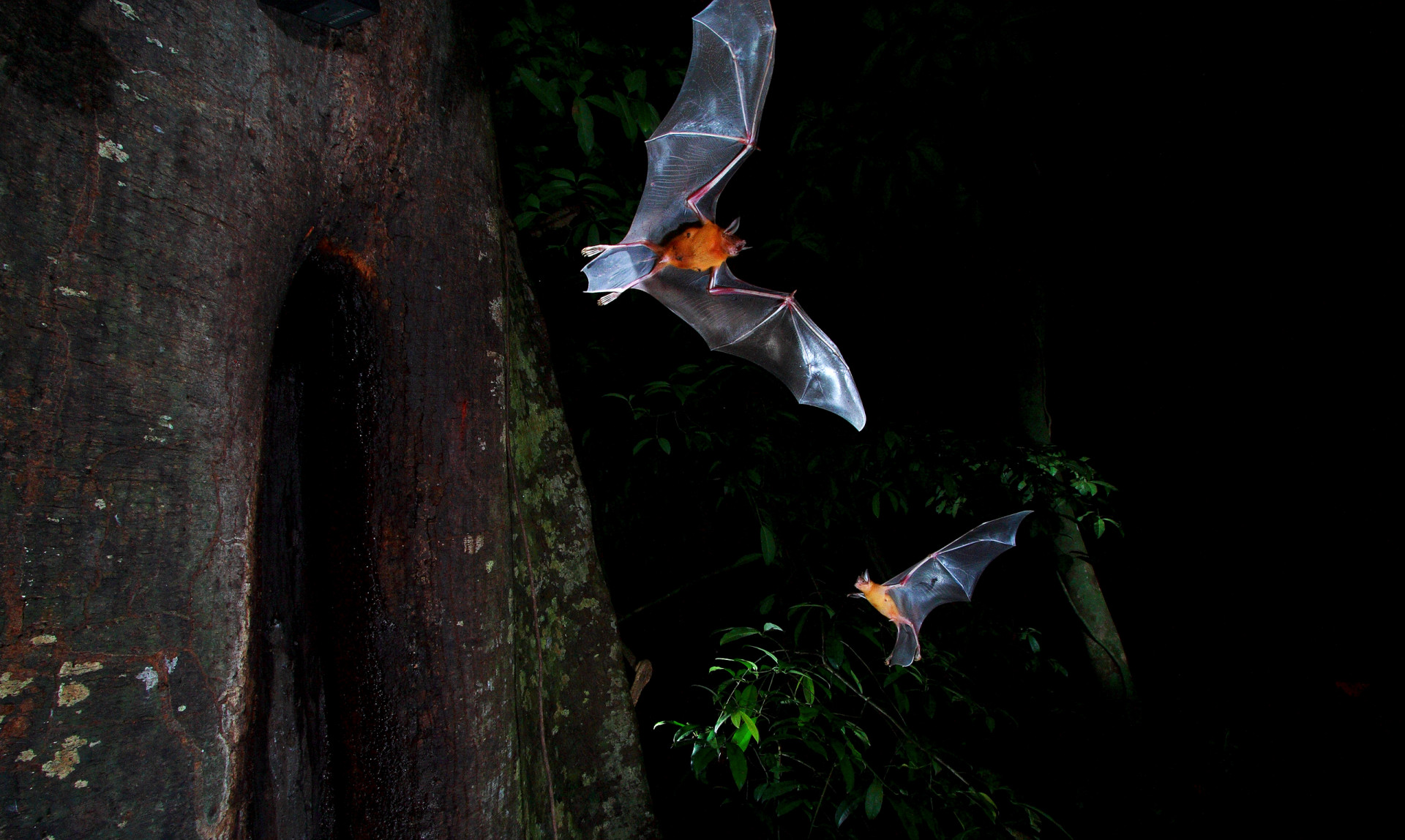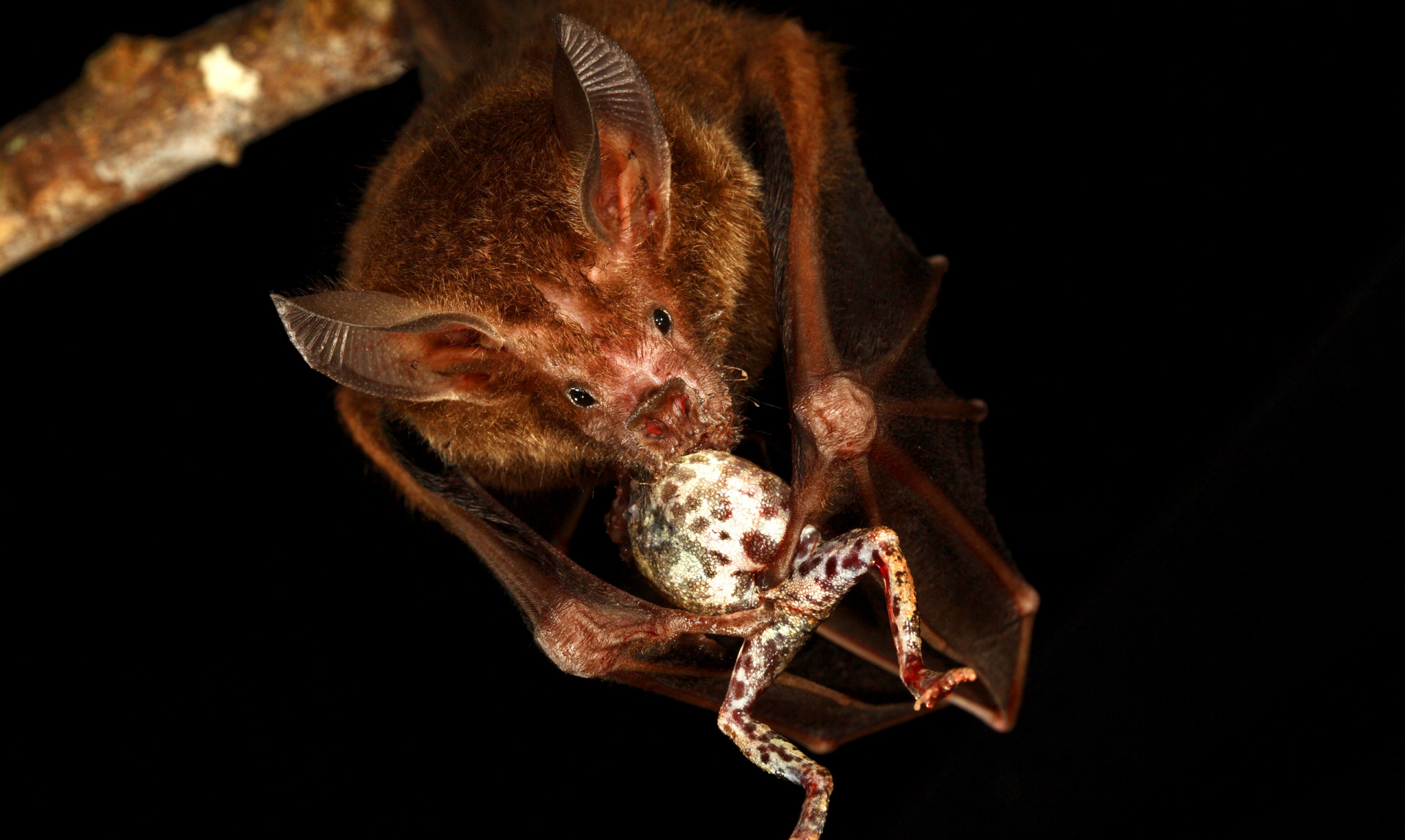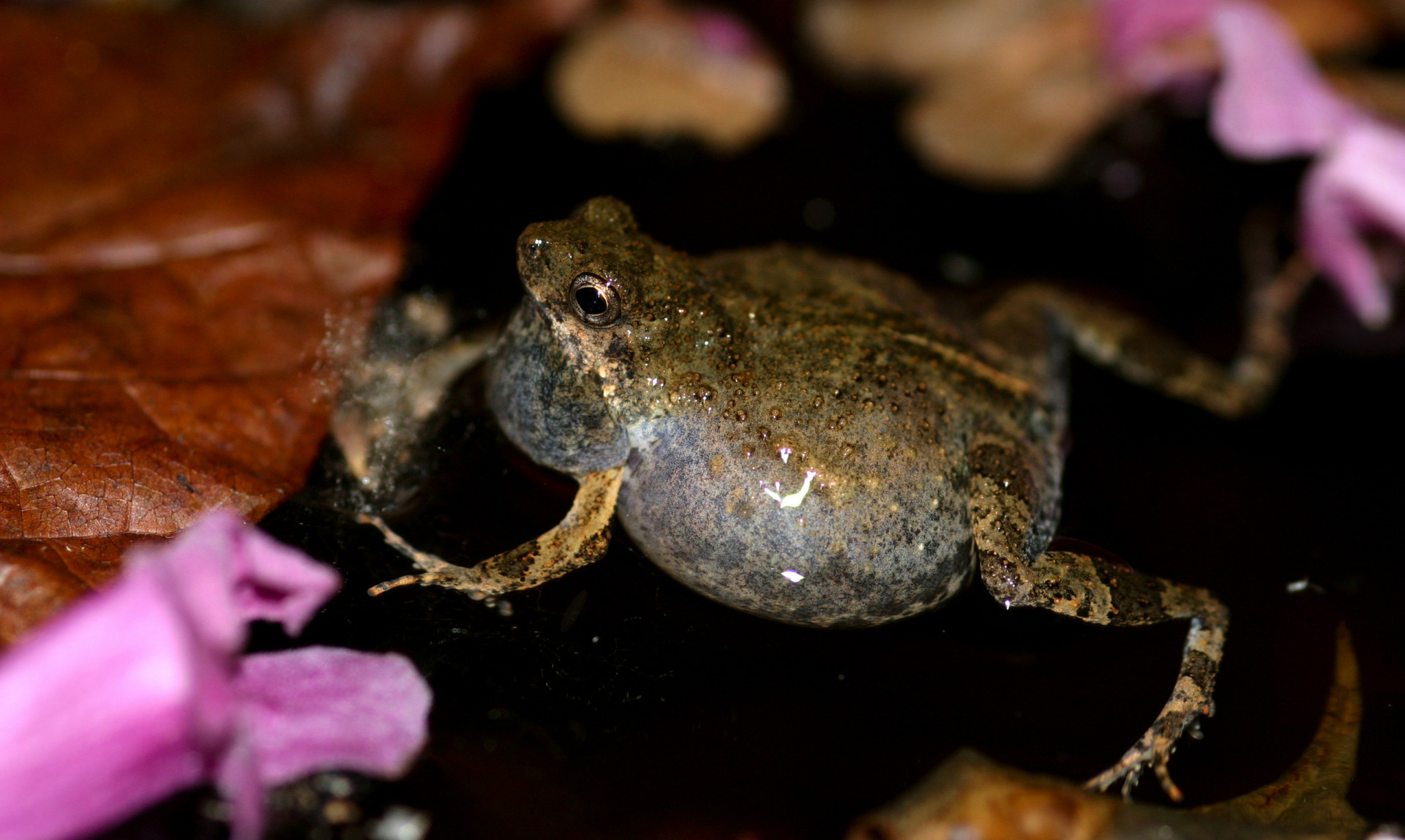Unlucky
túngaras
Risky ripples: frog’s love song may summon kiss of death
Gamboa, Panama
Things just got worse for male túngara frogs who beckon frog-eating bats with their mating calls. Now it appears that the ripples they make also attract hungry bats.
Male túngara frogs call from puddles to attract females. The production of the call incidentally creates ripples that spread across the water. Researchers at the Smithsonian Tropical Research Institute in Panama revealed that these ripples are used by other male frogs to assess the level of competition in the puddle. Unfortunately for the frogs, their main predator, the frog-eating bat, senses the ripples too, making the frogs easier targets.
The tún-gara sound of a tiny rainforest frog known to scientists as Physalemus pustulosus has been compared to a peacock’s train. Female frogs are attracted in large numbers to the ponds from which the males call night after night. But these calls also make it easier for frog-eating bats, Trachops cirrhosus, to find their prey. New work by a team from STRI, the University of Leiden, the University of Texas at Austin and Salisbury University in Maryland shows that much more is going on.
“It’s comparable to the use of lip reading,” said STRI postdoctoral fellow Wouter Halfwerk from the University of Leiden. “While sound is the most obvious component of the frogs’ communication, the call-induced ripples alter the behavior of competing males that sense them. Bats perceive the ripples too, using echolocation, which shows that the costs associated with communication can be imposed through a sensory domain that is fundamentally different than the intended receiver of the frog’s call.”
Competing male frogs increased their call rate by more than double when presented with ripples and sound as opposed to sound alone. Males stopped calling when they were inside the 7.5-centimeter defended zone of ripple-generating rivals, suggesting that ripples are used for competitive interactions. Males did not respond to ripples alone, showing that the cues derived from them have to be integrated with the accompanying sound to elicit the appropriate response.
Bats preferred to attack models making calls with ripples compared to calls alone. However, when researchers added leaf litter to simulate the conditions in some natural pools, there was no attack preference, presumably because the echo-acoustic cues were broken up by the debris, making them harder to detect by bats.
Another twist is that frogs cannot immediately stop call-induced ripples when a predator approaches. “When a bat flies by, the frog’s first line of defense is to stop calling,” said Rachel Page, a STRI staff scientist. “But the water ripples continue for another few seconds, effectively leaving a detection footprint for the approaching bat. This study shows how important it is to look at the full picture — perception not only of signals but also of their by-products by different receivers through different sensory channels can generate both costs and benefits.”
This project, published in Science, was made possible with funds from STRI, the U.S. National Science Foundation and the Netherlands Organization for Scientific Research and performed with research permits issued by the Government of Panama.



